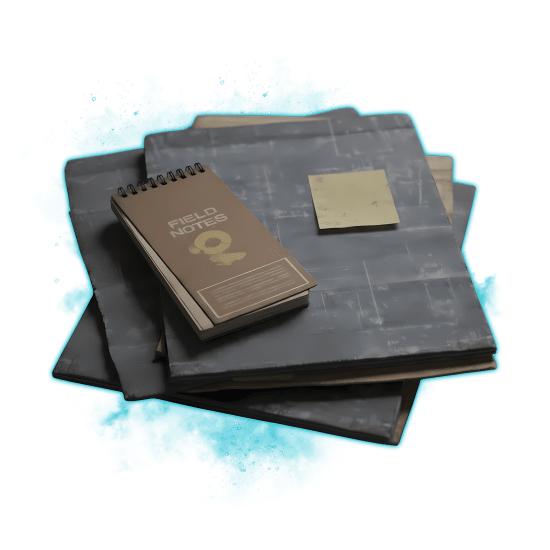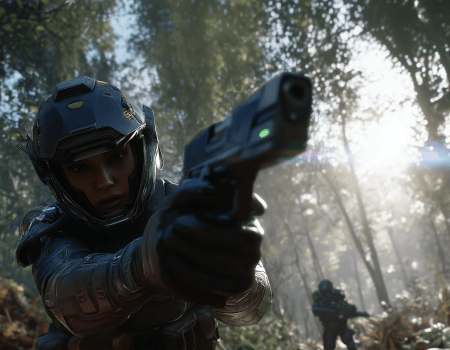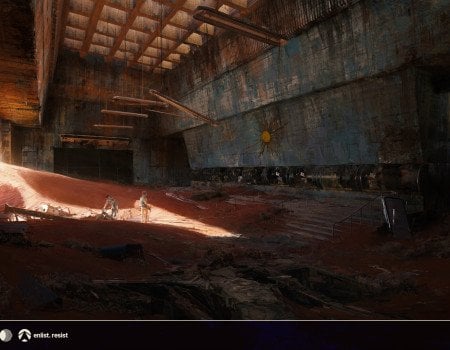In Speranza, there’s a limited stock of weapons and consumables, so everything is extra expensive. Luckily, as a Raider, you can use your workbenches to make everything you need from the stuff that you find Topside. In this ARC Raiders crafting guide, we’ll explain how crafting works, break down your Workshop, and explain how it can be used and upgraded to craft high-tier equipment. There are some less obvious mechanics related to crafting in this game that even a veteran extraction games enthusiast could miss, so buckle up and let’s dive in.
Do you want to be able to craft more advanced stuff but lack the required upgrades? Buy ARC Raiders Workshop Leveling at Skycoach and get any workbench and Scrappy leveled to any required level with the help of professional players who know how to get all the required items quickly. Start crafting epic items today with this exclusive offer!
Read our other ARC Raiders guides:
Note: At Skycoach, you can Buy ARC Raiders Boost at the best prices with fast delivery. Use our special PROMO CODE (in green) hidden in this article for a 20% DISCOUNT.
ARC Raiders Crafting Overview
Loot in the game is divided into several rarities, which you might already know. When in a raid, you will come across a wide variety of materials, items that can’t be used in the raid but rather used for crafting stuff when you’re back in Speranza. They’re a crucial component of the ARC Raiders crafting system.
Common rarity of materials, also known as Basic Materials, are used to craft almost everything you need - quick-use items like Bandages, ammo, weapons, Augments, weapon mods, etc. These Basic Materials include:
- Chemicals - used to craft medical supplies, explosives, and utility items.
- Metal Parts - used to craft a wide range of items (ammo, weapons, weapon mods).
- Fabric - used to craft medical supplies and shields.
- Rubber Parts - used to craft a wide range of items (some weapons, weapon mods, quick-use items).
- Plastic Parts - used to craft a wide range of items (some weapons, weapon mods, quick-use items).
If you wanted to memorize important materials and what they do, remember these and make sure you always have a few stacks of those in your stash.
Then you have Topside Materials, which are usually Uncommon (green) rarity and higher. Although one exception is an ARC Powercell, which is used to make Shield Rechargers, it is also a Common rarity item. Topside Materials includes a wide range of items that include stuff like ARC robot parts, Wires, Canisters, Gun Parts, Processors, and much more. Each of these items is used in the crafting of something else. But in order to get ARC Raiders crafting explained down to its bits, we need to talk about a few more crafting mechanics.
Recycling

Every material with a higher than Common rarity can be recycled into lower rarity materials. For example:
- Speaker Component (rare) recycles into 2x Plastic Parts + 3x Rubber Parts.
- Powercable (rare) recycles into 2x Battery + 2x Wires.
- Exodus Modules (epic) recycles into 1x Mechanical Components + 2x Magnet.
Recycling is extremely useful when you need basic components, but all you have are Uncommon, Rare, or Epic materials that you don’t need.
To recycle an item, right-click on it and select the “Recycle” option in the menu.
Sidenote: if you’re thinking about selling items to make some Coins, you need to check their Recycling Value. Meaning, you need to check if recycling the item will increase or decrease its value. It might be more profitable to recycle an item into lower-tier materials and sell them. But sometimes you will make more Coins by selling the item itself, as the sum of its parts will sell for much less. Always check that.
Workshop
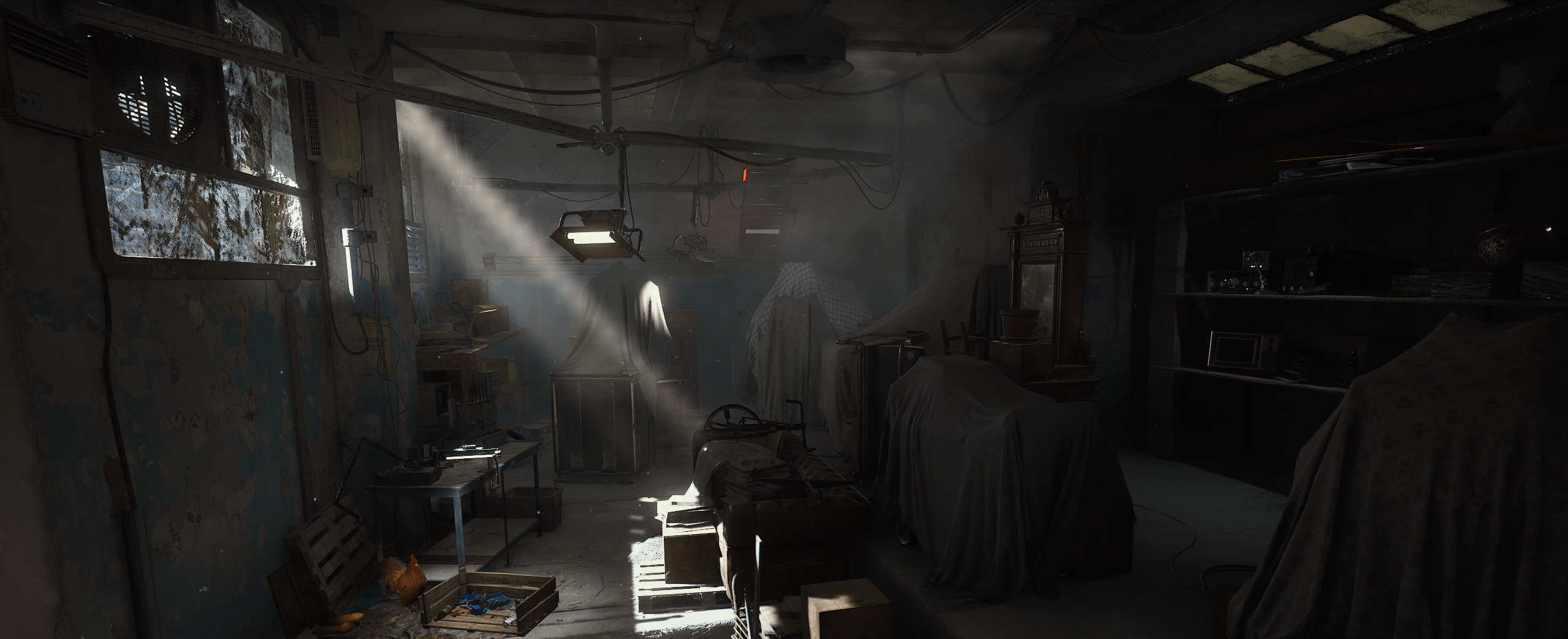
Workshop is a menu in Speranza where you get to turn the materials in your stash into something usable and useful. Inside, you have a few crafting stations, each responsible for crafting a specific type of item. Below is a complete overview of every known workbench, its main function, and confirmed examples of what can be crafted there. BLOG20
| Workbench | Function | Example Crafted Items |
| Workbench (General) | Basic early-game crafting station for essential items and ammo. Often, your first upgrade focus. | Looting Mk. 1, Light Shield, Heavy Ammo, Light Ammo, Medium Ammo, Shotgun Ammo, Shield Recharger, Bandage, Light Impact Grenade |
| Gunsmith | Used to craft and upgrade firearms and weapon components. Higher levels unlock stronger weapon mods and materials. | Arpeggio, Bettina, Tempest, Renegade, Anvil, Torrent, Burletta, Venator, Il Toro, Vulcano, Bobcat, Osprey |
| Gear Bench | Produces armor pieces, tactical kits, and shields for different loadouts. Each level unlocks improved variants. | Light Shield, Medium Shield, Heavy Shield, Combat Mk. 1–2, Looting Mk. 1–3, Tactical Mk. 1–2 |
| Medical Lab | Focuses on healing items and field recovery tools. Essential for sustain in raids. | Vita Spray, Bandage, Herbal Bandage, Surge Shield Recharger, Defibrillator |
| Explosives Station | Creates grenades and other throwable explosives. Higher levels introduce advanced variants. | Gas Grenade, Light Impact Grenade, Blaze Grenade |
| Utility Station | Provides tactical and mobility tools for exploration and combat. | Barricade Kit, Binoculars, Door Blocker, Remote Raider Flare, Smoke Grenade, Lure Grenade, Zipline, Photoelectric Cloak, Snap Hook, Tagging Grenade |
| Refiner | Converts raw materials into advanced components for crafting higher-tier gear and weapons. | Electrical Components, Crude Explosives, ARC Circuitry, Advanced Mechanical Components, Antiseptic, Heavy Gun Parts, Magnetic Accelerator, Mod Components |
There’s no need for a separate ARC Raiders workshop guide, because all you need to know is that upgrading each workbench is essential to progress through ARC Raiders’ crafting tiers. Every station in the Workshop can be leveled up using materials gathered during raids. There are 3 tiers of upgrades for benches that are known, but based on the datamined achievements, you can upgrade those benches even beyond that. In any case, upgrading a workbench unlocks access to more things that you can craft with it. From simple bandages at tier 1, you can make Herbal Bandages that restore full health, and so on.
Blueprints
Some specific items (usually something cool) cannot be crafted unless you find a blueprint for them. These ARC Raiders crafting blueprints can be found in some containers during raids or as quest rewards. Once you find a blueprint in a raid, you need to extract it and then use it to learn how to craft its item. Once used, the blueprint disappears, and the item becomes available to craft at any time. So, a blueprint is not one of the required materials to craft an item; it just unlocks the ability to craft an item.
Repairs & Upgrades
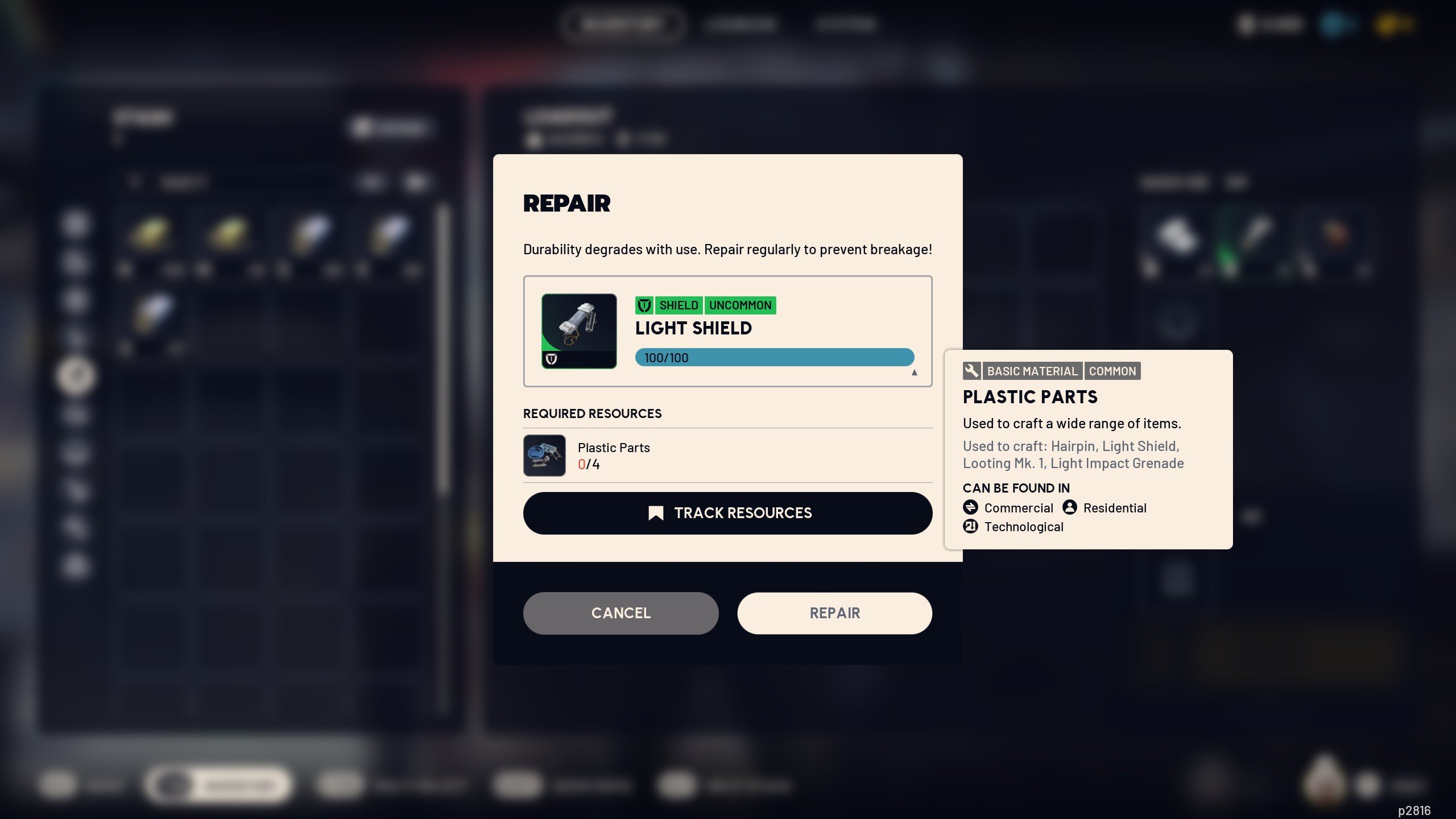
Another part of the crafting system has to do with spending your materials on repairing and upgrading your equipment.
Weapons, shields, and augments all have a stat called Durability. The longer you use the same equipment, the more durability it loses. In the case of weapons, lower durability increases the time it takes to reload. With shields, you get less shield capacity. When durability reaches 0, the item becomes unusable. That’s why you need to keep track of the durability and repair your items when needed. Depending on the condition, you will need a different amount of materials to repair it. The game will tell you which specific materials you need, but they’re usually the same ones used to craft the item.
Upgrading is a little different. Instead of increasing an item’s rarity you can add additional properties to it. Let’s take the Assault Rifle Arpeggio as an example and take a look at what bonuses you will get for upgrading it:
| Version | Upgrade Bonuses |
| Arpeggio I | — |
| Arpeggio II | +20% Fire Rate, –12.5% Reload Time, +10 Durability |
| Arpeggio III | +40% Fire Rate, –25% Reload Time, +20 Durability |
| Arpeggio IV | +60% Fire Rate, –50% Reload Time, –70% Durability Burn Rate |
Each upgrade tier adds stronger performance modifiers instead of raw stat changes, improving how the weapon handles and lasts during extended raids. Just keep in mind that you need a Gunsmith bench to be able to upgrade your weapons.
Scrappy the Rooster: A Steady Source of Materials
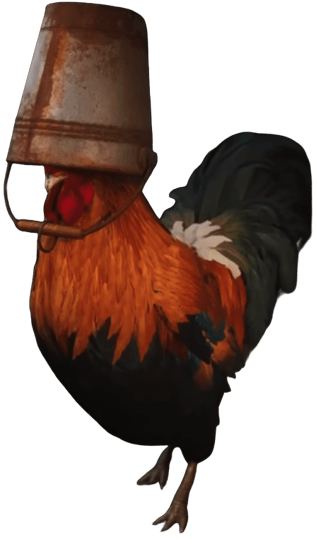 Scrappy has been part of the Workshop long before you arrived. This old rooster isn’t just decoration — he’s a scavenger who occasionally returns with small batches of useful crafting materials. His finds can include metal parts, fabric, plastic, rubber, chemicals, and even seeds for certain consumables.
Scrappy has been part of the Workshop long before you arrived. This old rooster isn’t just decoration — he’s a scavenger who occasionally returns with small batches of useful crafting materials. His finds can include metal parts, fabric, plastic, rubber, chemicals, and even seeds for certain consumables.
As you upgrade Scrappy’s level, he becomes more efficient at sourcing materials and increases the variety and amount he brings back. His deliveries are completely passive, meaning he gathers items over time while you’re out raiding or exploring. You can collect them from his box inside the Workshop whenever you return.
Leveling Scrappy requires specific items like Dog Collars and fruits such as Lemons or Apricots. Each new stage improves his yield rate and possibly unlocks new material types, making him one of the most reliable long-term sources of basic resources in ARC Raiders’ crafting loop.
ARC Raiders Crafting Tips and Tricks
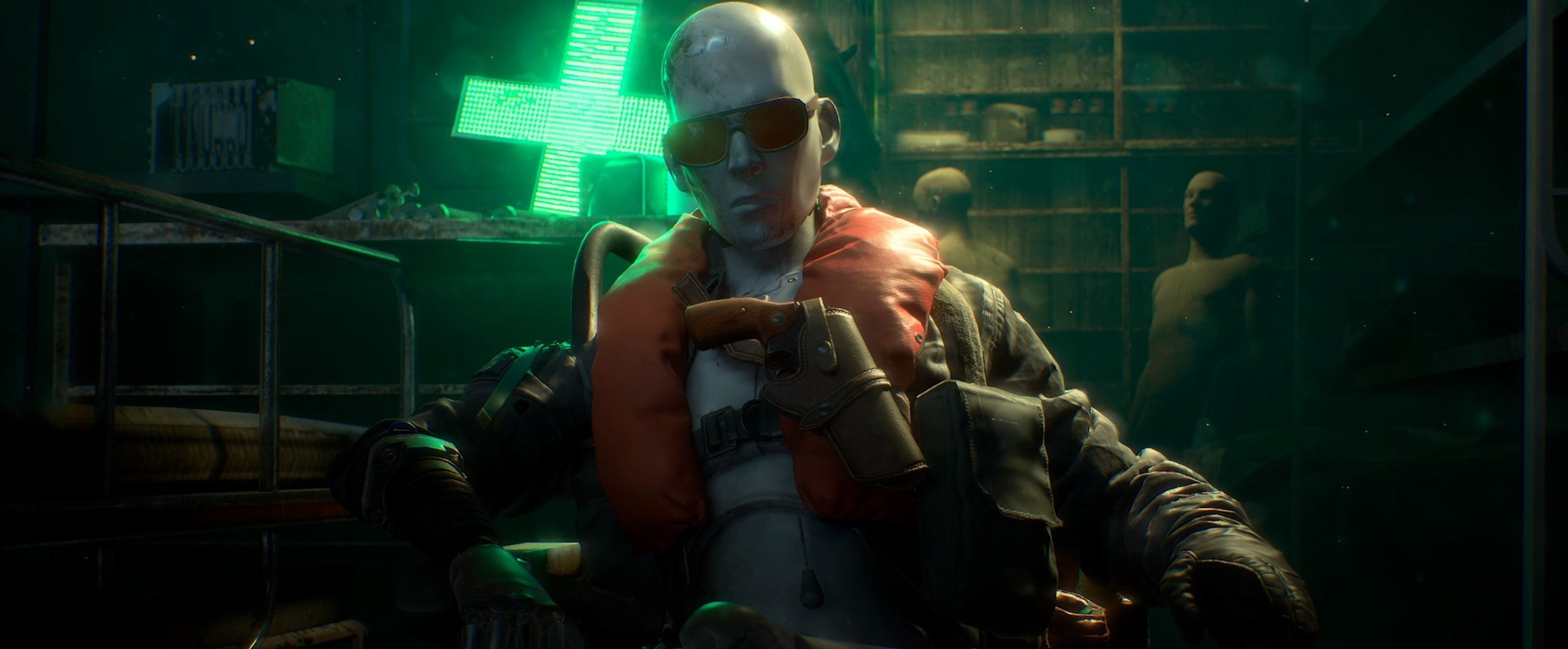
Crafting in this game might seem pretty conventional, but there are things about it that you might not know. Here are a few secret ARC Raiders crafting tips that might even save your life in a raid:
- You can craft some things in-raid: if you’re running low on consumables in the raid but you have picked up the stuff they’re made of, consider unlocking the “In-round crafting” skill from the Survival branch of the skill tree. It will allow you to craft those basic consumables. You can even expand the list of items you can craft mid-raid if you unlock the next skill for it called “Traveling Tinkerer”.
- Basic Materials can be used as consumables: this is probably the least obvious thing about materials, but Fabric can be used to restore health like a bandage if you don’t have the skill that allows you to craft stuff mid-raid. ARC Powercell that drops from defeated ARC robots can be used like a Shield recharger to restore your shield. Food can also be used to restore health, even though these items are categorized as Trinkets that are usually only good for selling. BLOG20
- Unconventional Items might be used: following up on the last tip, more items have functionality that might seem like just “loot”. The most common example is a Rubber Duck. It can be thrown to create noise to attract ARC or distract other players.
- Track resources for crafting and upgrades: Once you start expanding your Workshop, you can press “Track Resources” on any crafting recipe or upgrade project. This highlights the materials you need during raids, showing icons on loot that match your tracked goals. It’s one of the easiest ways to focus your looting runs and avoid bringing back unnecessary junk.
- Listen for barrel stashes and check field depots: Barrel stashes give off a faint ticking sound — that’s your cue to stop and investigate. They’re one of the best mid-raid sources of rare crafting materials and even high-tier components. Field depots work similarly but require you to carry a nearby crate to unlock them. Both are easy to overlook, yet they can give you the upgrade materials you’d normally only find much later.
Other things, like putting the most needed materials in your safe pocket and similar tips, are too obvious to list here. You’ll figure out the rest on your own. The five tips above are going to go a long way.
Conclusion
In games with extraction mechanics, crafting is one of the main ways to progress to the endgame. You collect materials, craft better gear, and take on bigger challenges. Sometimes it's worth going on a looting raid where all you do is check any loot containers you come across and then safely extract without firing a single shot. Remember, a simple stack of 5 Bandages costs 1000 Coins at a vendor; meanwhile, you can craft those yourself just from 10x Fabric, which is found literally everywhere. This goes for everything else in the game. Buying stuff should be your last resort, seeing how easy it is to just make whatever it is you need.
F.A.Q.
How to craft weapons in ARC Raiders?
Each weapon has its own list of required materials to craft it. They usually include things like Metal Parts, Mechanical Components, etc. If you have the blueprint for it, just hover over the weapon in your Workshop to see the list of materials it needs.
Can I dismantle unwanted items in ARC Raiders?
Yes, it’s called recycling in this game. Right-click on an item and click Recycle to get lower-tier materials.
Is it more profitable to sell an item or recycle it and then sell it in ARC Raiders?
The Recycle value might be greater or less than the item itself. Always check the price of the recycled materials that you will get before selling an item.
How to upgrade weapons in ARC Raiders?
Weapons can be updated with materials like Light, Medium, Heavy, Simple, and Complex Gun Parts.
How to repair gear in ARC Raiders?
If the durability of your gear is lower than 100, you can spend some materials, which are usually the same ones used for crafting it, to repair it.


